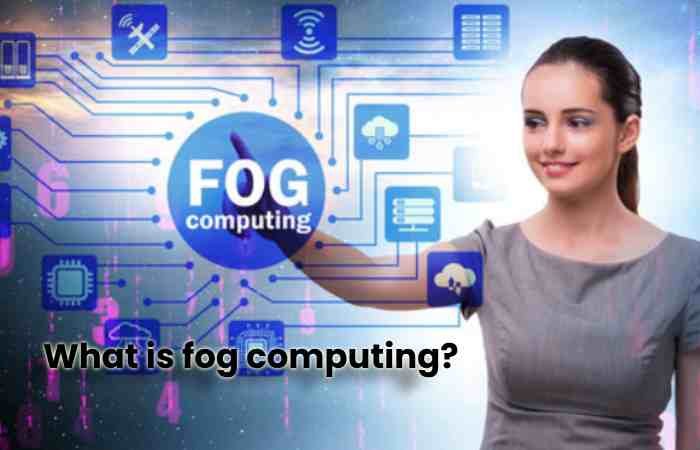Fog computing is an important trend that anyone working or wanting to work in technology should understand. There are many potential applications, from industrial and manufacturing environments to hospitals and other healthcare settings. But what is fog computing and how is it different from cloud computing? We’ll take a look.
It is not surreptitious that many of our activities currently depend on technology. It is how these processes’ concepts came to light a few years ago and are increasingly taking centre stage. Its options and functions are becoming more and more remarkable and satisfactory. One of them is fog computing. Which, if you don’t know, below we will explain what it is about, how and what its functionalities are, although it is possible that some of them already recognize them.
Table of Contents
What is fog computing?

Also known as “fog computing,” it is a cloud architecture where data sent by devices from an edge is stored and communicated locally. Consequently, it is in charge of doing the routing process to send the data to be processed in a nearby network.
Its name was given by the multinational Cisco, who was the manufacturer that gave it its name because the accumulation of data is similar to fog, hence the term “fog.”
This technology aims to lessen the channel through which devices and the cloud communicate. Therefore, it quickly processes the destination of this data according to its characteristics so that the process is shorter and more functional.
Why Is Fog Computing Used?
There are some reasons why fog computing is used:
- To improve inexpression and performance: Because Fog bulges are often deployed at the edge of the network, closer to the IoT devices themselves, they can meaningfully reduce processing time and improve performance for applications requiring low latency.
- To improve decision making: This can help improve real-time decision making as fog computing enables real-time data collection and analysis from IoT devices.
- Reduce costs: Fog computing can also help decrease costs related with data storage and analysis. In effect, Fog Computing reduces the amount of data that must be transferred to a central location for processing by moving computing and data storage closer to the advantage of the network.
Advantages and Disadvantages
Although it was created to provide a more significant amount of ease and benefit, it also has properties that are not appropriate. And below, we will mention the most outstanding ones:
Advantage
- Low navigation costs.
- Offline use.
- Greater privacy.
- Increasing latency.
Disadvantages
- Vulnerability.
- Investment in equipment and devices.
- Concurrent maintenance requirement.
Example of Fog Computing Today
To understand how this technology is taken out, we can explain it through this example:
The most common could be your cell phone or computer in which information is stored, making it easier for it not to have to connect to the cloud again to access it. In this way, many applications can access it more easily without requesting the information unless necessary.
Furthermore, following this example. Says that it is no longer necessary to stay connected with the internet through fog computing by keeping the same device’s information. If not having a connection, applications and programs can be in the same way. Afterwards, they only have to synchronize the data to update it if necessary when recovering it.
Fog Computing: Edge Computing (differences and functionalities)
The first thing to simplify is that edge computing is the infrastructure that allows the transfer and processing on the edge of the information. Meanwhile, fog computing is responsible for routing data to reduce latency in this sense. It can discern when necessary processing information on the edge or sent to the cloud.
In such a way, they are processes that, when joining together, a great benefit because their purpose is to increase the speed and shorten data transmission, resulting in a better service. However, their relationship involves cloud computing due to the processing within the cloud, as this trinomial allows the process to be optimal.
It’s known that this is a service that has grown in the right way and represents the future of what is to come, which promises a useful and increasingly profitable evolution, especially for the business area.
Fog Computing: Architecture (diagram)

When referring to the architecture and operation of fog computing, it is necessary to conceptualize each of the processes:
Edge / Edge Layer:
At this level are located each of the IoT ( fog computing ) devices that act as transmitters of the information contained in an edge. Therefore their processing occurs in the same fog server.
Fog Layer:
It refers to the server that obtains the information from the edge layer. And, it is responsible for sending it to the cloud if it requires it.
Cloud Layer:
The cloud, the place where they are stored, and, as the case may be, processed, being the last step in this process.
Why apply Fog Computing in Your Company?
If you still doubt what this technology can mean in your business and your company, we can say that it is beneficial for companies to connect with the digital market. Among its benefits, the most noteworthy are stability and performance, the response time is less, the failures are summary, protection increases, low storage costs, reduction of data server congestion, among others.
Likewise, this type of technology is a significant step that can maximize its reach. It is perfect for the work area since internal and external customers can enjoy its benefits. So that all those involved will be able to verify the feasibility and opportunity it offers.
